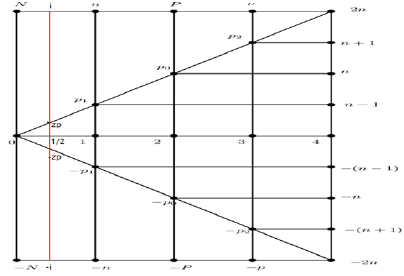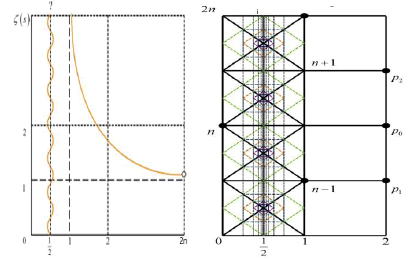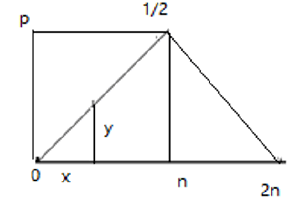The symmetry of N-domain and prime conjectures
Received: 27-Dec-2022, Manuscript No. puljpam-22-6002; Editor assigned: 29-Dec-2022, Pre QC No. puljpam-22-6002 (PQ); Accepted Date: Jan 03, 2023; Reviewed: 31-Dec-2022 QC No. puljpam-22-6002 (Q); Revised: 02-Jan-2023, Manuscript No. puljpam-22-6002 (R); Published: 30-Jan-2023, DOI: 10.37532/2752-8081.23.7(1).20-21.
Citation: Yajun L. The symmetry of N-domain and prime conjectures. J Pure Appl Math. 2023; 7(1):20-21.
This open-access article is distributed under the terms of the Creative Commons Attribution Non-Commercial License (CC BY-NC) (http://creativecommons.org/licenses/by-nc/4.0/), which permits reuse, distribution and reproduction of the article, provided that the original work is properly cited and the reuse is restricted to noncommercial purposes. For commercial reuse, contact reprints@pulsus.com
Abstract
In this paper, we discuss the symmetry of N-domain and we find that using the symmetry characters of Natural Numbers we can give proofs of the Prime Conjectures: a concise proof of Fermat last theorem Polignac’s conjecture (twins Prime Conjecture) Goldbach Conjecture and Reimann Hypothesis.
Keywords
N domain; Prime conjectures
Introduction
We have
N ~( 0,1,2,3,4,...........) all the natural numbers
n ~( 1,2,3,4,...........) all the natural numbers excepted 0
P ~( 2,3,5,7,...........) all the prime numbers
p ~( 3,5,7,...........) all the odd prime numbers
We notice that
N ~( 0, n)
P ~( 2, p)
1: The proof of twin primes conjecture and goldbach conjecture
We can define a N, n, P, p, 2n coordinate system shown in Figures 1 and 2.


p1, p0, p2 ∈ p
we can get
p1 → n - 1
p0 → n
p2 → n + 1
And
- p1 → - (n-1)
- p0 → -n
- p2 → - (n+1)
So we have
p2 + (- p1) → n + 1 - (-(n-1)) = 2n
This is the proof of Polignac’s conjecture.
And
p2 - p1 → (n+1) - (n-1) = 2
This is the proof of twin primes conjecture.
And
2n = n + 1 + n - 1 → p2 + p1
And
n -1 > 2 n > 3 so 2n > 6
This mean that every even number bigger than six can be divided into two odd prime numbers in N domain.
This is the proof of Goldbach conjecture.
2: The proof of Riemann Hypothesis
Riemann Zeta-Function is

Riemann hypothesis
All the Non-trivial zero-point of Zeta-Function Re(s ) = 1/2 .
We have
0 = 1 / 2 - 1 / 2
1 = 1 / 2 + 1 / 2
i2 = - 1
1 / 2 = 1 / 2 * (1/2+1/2i) (1/2-1/2i)

The tr(A)=1/2*n
This is mean that all the non-trivial Zero points of Riemann zetafunction are on the 1/2 axis just show as Fig.3. This is the proof of Hilbert–Pólya conjecture. So we give a proof of Riemann Hypothesis (Figures 2 and 3).
3: A concise proof of fermat’ last theorem
We can definite a function as

So x + y = n

And x + y ∈ p
x2 + y2 = n2


But we notice that:
When x + y = 3∈p xy = 3 (x = 1, y + 3)

This is equal to X3 + Y3 = n3 has no integer solution. This is a concise proof of Fermat’ last Theorem.









